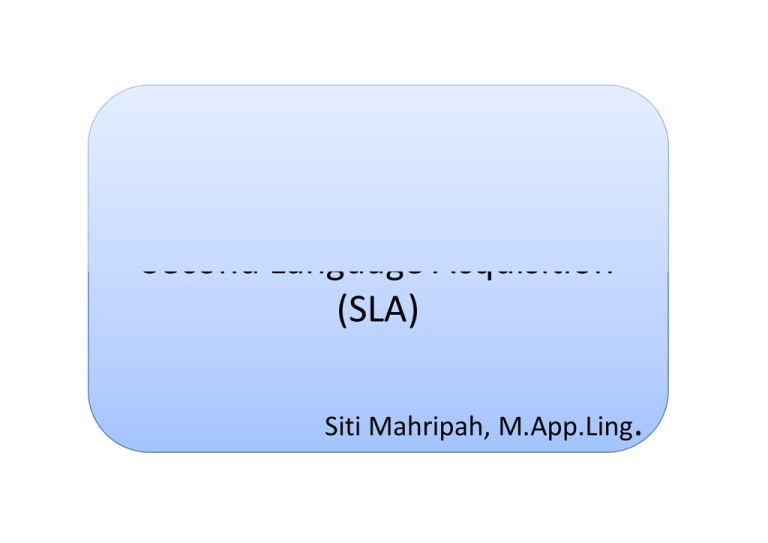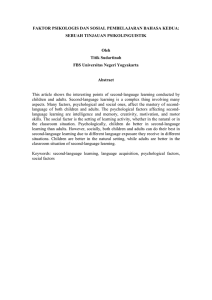Lecture 2 PBI207 Second Language Acquisition (SLA)
advertisement

Lecture 2 PBI207 Second Language Acquisition (SLA) Siti Mahripah, M.App.Ling. Definition Second-language acquisition or second-language learning is the process by which people learn a second language. Second language refers to any language learned in addition to a person's first language; although the concept is named second language acquisition, it can also incorporate the learning of third, fourth or subsequent languages.[1] Second-language acquisition refers to what learners do; it does not refer to practices in language teaching. There have been many theories of secondlanguage acquisition that have been proposed, but none has been accepted as an overarching theory by all SLA researchers. Due to the interdisciplinary nature of the field of secondlanguage, it is hard to pin down a precise starting date. Early concepts in Second Language Acquisition research 1950s interference: Weinreich compound/coordinate bilingualism: Weinreich Contrastive Analysis, transfer: Lado habit-formation: Lado, Bloomfield etc phrase structure grammar: Bloomfield etc 1960s independent grammars assumption: school of Chomsky Language Acquisition Device: Chomsky 1964 hypothesis-testing: Corder 1970s interlanguage: Nemser, Selinker Error Analysis: Corder, 1971






